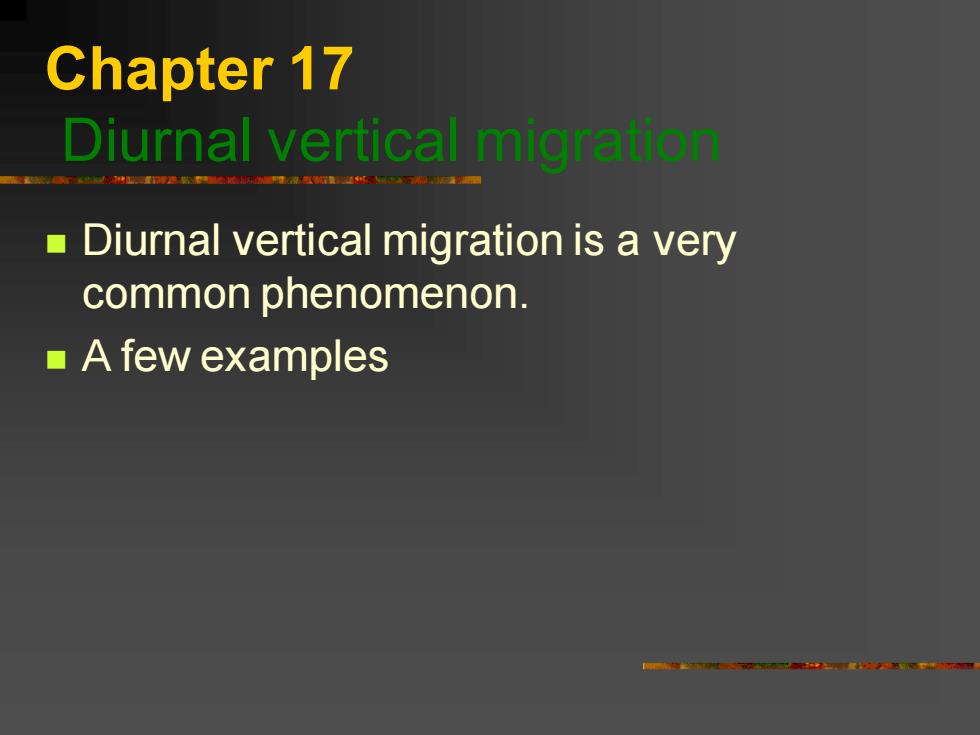
Chapter 17 Diurnal vertical migration ◼ Diurnal vertical migration is a very common phenomenon. ◼ A few examples
Chapter 17 Diurnal vertical migration ◼ Diurnal vertical migration is a very common phenomenon. ◼ A few examples
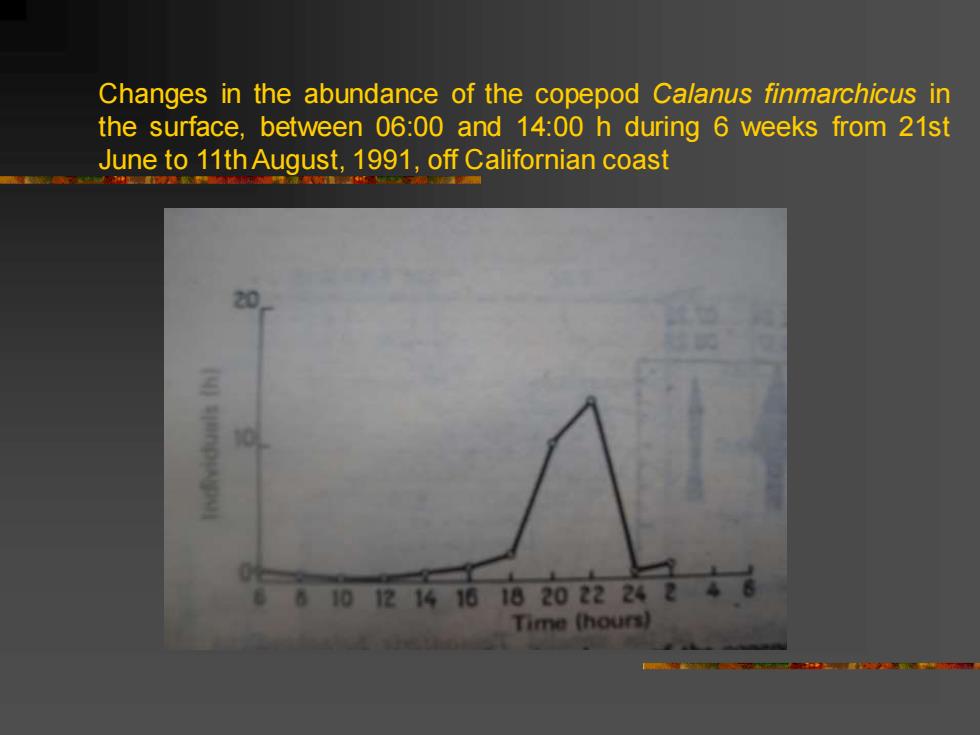
Changes in the abundance of the copepod Calanus finmarchicus in the surface, between 06:00 and 14:00 h during 6 weeks from 21st June to 11thAugust, 1991, off Californian coast
Changes in the abundance of the copepod Calanus finmarchicus in the surface, between 06:00 and 14:00 h during 6 weeks from 21st June to 11thAugust, 1991, off Californian coast
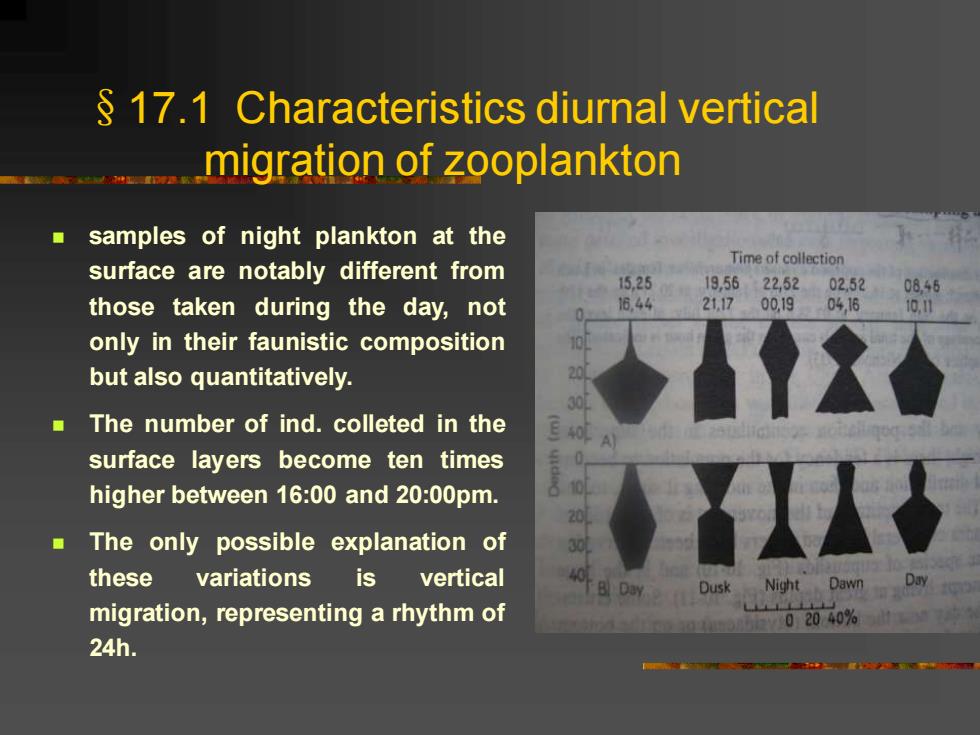
§17.1 Characteristics diurnal vertical migration of zooplankton ◼ samples of night plankton at the surface are notably different from those taken during the day, not only in their faunistic composition but also quantitatively. ◼ The number of ind. colleted in the surface layers become ten times higher between 16:00 and 20:00pm. ◼ The only possible explanation of these variations is vertical migration, representing a rhythm of 24h
§17.1 Characteristics diurnal vertical migration of zooplankton ◼ samples of night plankton at the surface are notably different from those taken during the day, not only in their faunistic composition but also quantitatively. ◼ The number of ind. colleted in the surface layers become ten times higher between 16:00 and 20:00pm. ◼ The only possible explanation of these variations is vertical migration, representing a rhythm of 24h
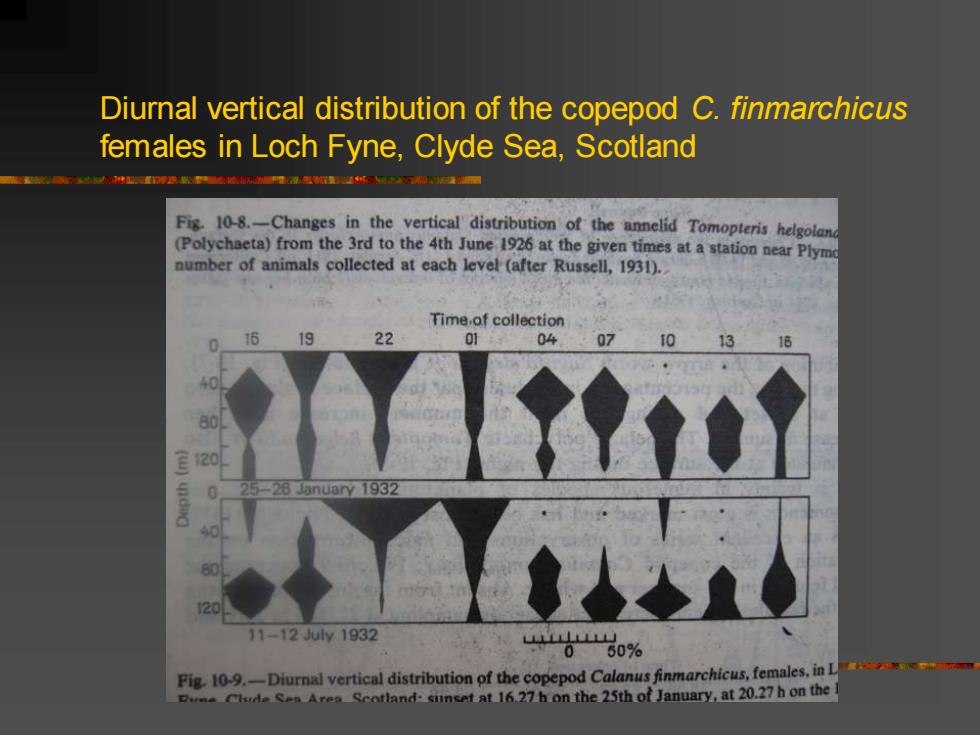
Diurnal vertical distribution of the copepod C. finmarchicus females in Loch Fyne, Clyde Sea, Scotland
Diurnal vertical distribution of the copepod C. finmarchicus females in Loch Fyne, Clyde Sea, Scotland
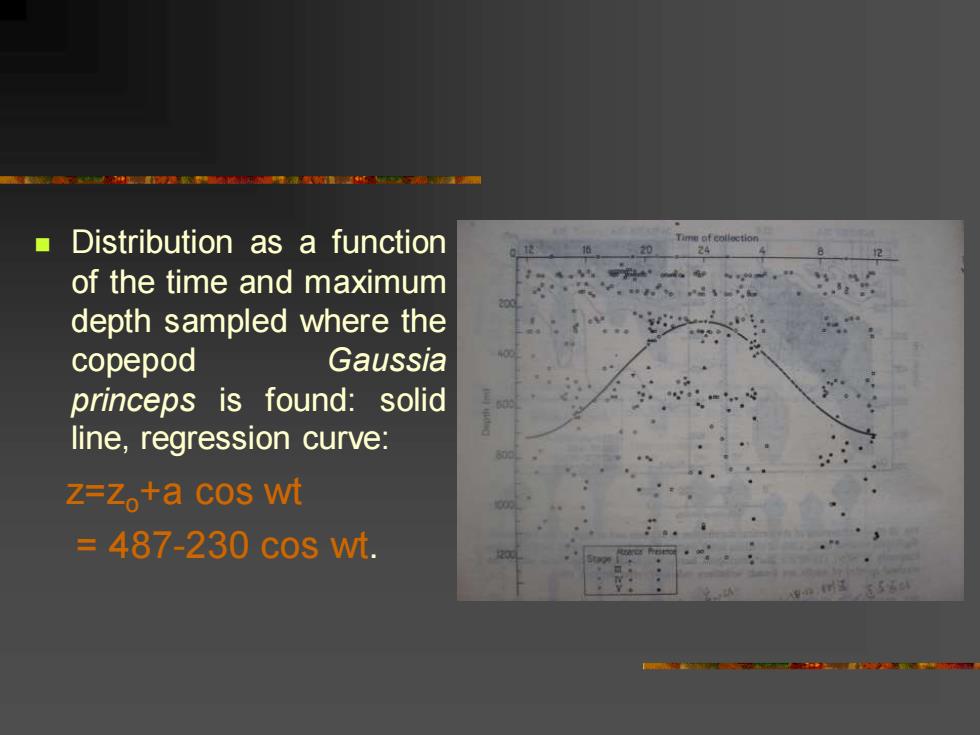
◼ Distribution as a function of the time and maximum depth sampled where the copepod Gaussia princeps is found: solid line, regression curve: z=zo+a cos wt = 487-230 cos wt
◼ Distribution as a function of the time and maximum depth sampled where the copepod Gaussia princeps is found: solid line, regression curve: z=zo+a cos wt = 487-230 cos wt